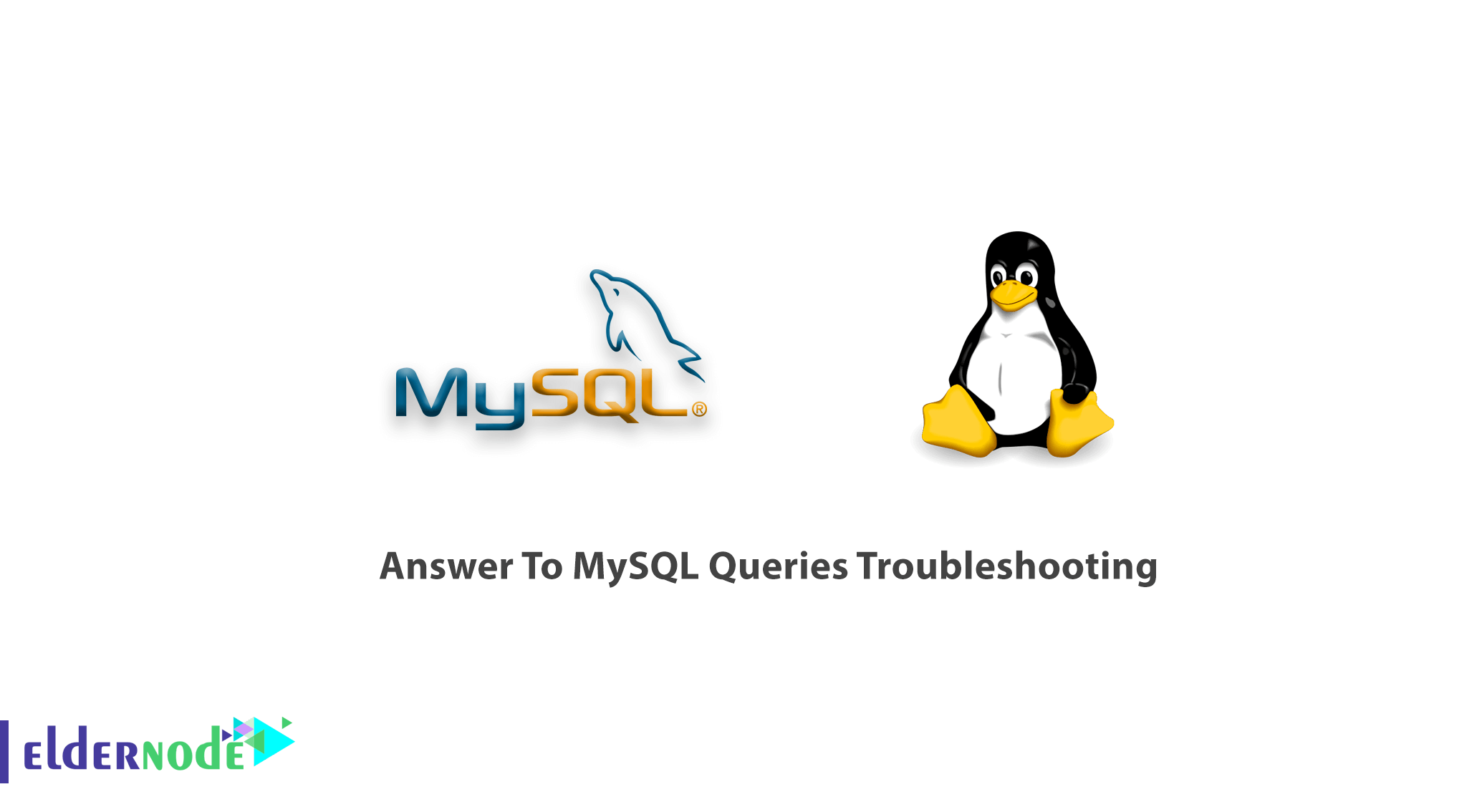
In the following of MySQL tutorials, In this article, we will Answer To MySQL Queries Troubleshooting. Join us in troubleshooting resources and starting points as you diagnose your MySQL setup. We’ll go over some of the issues that many MySQL users encounter and provide guidance for troubleshooting specific problems.
To let this guide work better, try to purchase and use VPS or Linux web hosting.
Answer To MySQL Queries Troubleshooting
Let’s review this guide to learn more about MySQL.
As a user, you may have run into problems once you begin issuing queries on your data. In some database systems, including MySQL, query statements in must end in a semicolon (;) for the query to complete, as in the following example:
SHOW * FROM table_name;Then, if you fail to include a semicolon at the end of your query, the prompt will continue on a new line until you complete the query by entering a semicolon and pressing ENTER.
Also, some users may find that their queries are exceedingly slow. One way to find which query statement is the cause of a slowdown is to enable and view MySQL’s slow query log. To do this, open your mysqld.cnf file, which is used to configure options for the MySQL server. This file is typically stored within the /etc/mysql/mysql.conf.d/ directory:
sudo nano /etc/mysql/mysql.conf.d/mysqld.cnfScroll through the file until you see the following lines:
. . . #slow_query_log = 1 #slow_query_log_file = /var/log/mysql/mysql-slow.log #long_query_time = 2 #log-queries-not-using-indexes . . .
Have a look at these commented-out directives provide MySQL’s default configuration options for the slow query log. Specifically, here’s what each of them does:
slow-query-log: Setting this to 1 enables the slow query log.
slow-query-log-file: This defines the file where MySQL will log any slow queries. In this case, it points to the /var/log/mysql-slow.log file
long_query_time: By setting this directive to 2, it configures MySQL to log any queries that take longer than 2 seconds to complete.
log_queries_not_using_indexes: This tells MySQL to also log any queries that run without indexes to the /var/log/mysql-slow.log file. This setting isn’t required for the slow query log to function, but it can be helpful for spotting inefficient queries.
Uncomment each of these lines by removing the leading pound signs (#). The section will now look like this:
. . . slow_query_log = 1 slow_query_log_file = /var/log/mysql-slow.log long_query_time = 2 log_queries_not_using_indexes . . .Note: If you’re running MySQL 8+, these commented lines will not be in the mysqld.cnf file by default. In this case, add the following lines to the bottom of the file:
. . . slow_query_log = 1 slow_query_log_file = /var/log/mysql-slow.log long_query_time = 2 log_queries_not_using_indexes
You can save and close the file when you enabled the slow query log. And after that restart the MySQL service:
sudo systemctl restart mysqlWith these settings in place, you can find problematic query statements by viewing the slow query log. You can do so with less, like this:
sudo less /var/log/mysql_slow.logAdditionally, MySQL includes the EXPLAIN statement, which provides information about how MySQL executes queries. This page from the official MySQL documentation provides insight on how to use EXPLAIN to highlight inefficient queries.
Conclusion
In this article, you learned how to troubleshoot MySQL Queries. From now on you are able to solve some of the MySQL issues. You are recommended to read more of our related articles on How to install MySQL on CentOS 8 AND How to install MySQL on Windows Server to get expert.





Is it possible to stop MySQL query execution?
Yes, it is. Follow the below path to do this.
• Show processlist;
• Then review the “Time” field to find the longest running query.
• Next, run the following command to kill it: kill thread_ID;
I want to start MySQL server.
Enter the following command after launching the MySQL command-line client and enter the password when prompted because the –p option is needed when a root password is defined for MySQL:
mysql -u root -pvery well. In want to clear MySQL connections.
you can kill some connections manually or restart the server (but that will be slower). Use SHOW PROCESSLIST to view all connections, and KILL the process ID’s you want to kill. However there are various tools and scripts that support it.
I need a free MySQL server.
MySQL is free and open-source software and is used by many database-driven web applications, including Drupal, Joomla, phpBB, and WordPress.
Is MariaDB better than MySQL?
If you consider the connection, I can say yes. From point of connection pool supporting, MariaDB is better because it has up to 200,000 connections whereas MySQL has smaller connection pool.